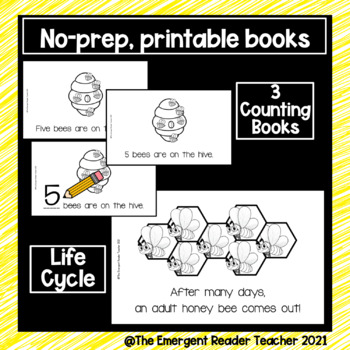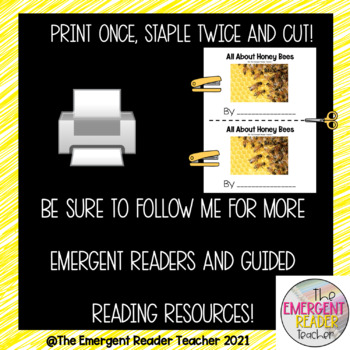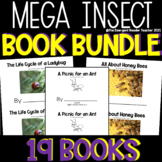All About Honey Bees: Emergent Reader Book Bundle
- Zip
What educators are saying
Products in this Bundle (3)
Also included in
- Get NINETEEN books at a discount with this emergent reader insect bundle that includes everything your students need to know about butterflies, ladybugs, praying mantises, ants and honey bees. These printables are no prep and the perfect addition to your guided reading groups, math lessons, sciencePrice $16.50Original Price $24.00Save $7.50
Description
Get FIVE books at a discount with this emergent reader insect bundle that's all about counting honey bees, honey bee facts & their life cycle. These printables are no prep and the perfect addition to your guided reading groups, your math lesson or your literacy block in Kindergarten, 1st, 2nd and 3rd grade! These printable booklets can be used to help reinforce beginning reading strategies such as pointing under words, 1:1 matching when reading, identifying sight words and using beginning sounds to decode.
Save yourself time (and money!) as you teach your students about honey bees with this high quality book bundle!
This honey bee bundle includes one non-fiction book that is filled with full colored pictures and facts, a black and white printable that teaches the steps of the honey bee life cycle along with THREE versions of an easy math reader where students count honey bees (count & write, reading with number words and reading with numerals).
Non-Fiction Book
- Teaches basic facts about honey bees, the roles of each bee, how important they are to our environment and their classification
- Contains full-color and high-quality pictures
- Can print in color (for best quality) or black and white
- Easy to read and understand honey bee facts for kids
Life Cycle Book (Black and White)
- Teaches specifically about the honey bee's life cycle
- Ink saving (black and white)
- Easy to read and understand honey bee facts for kids
- Simple text
Counting Honey Bees (Black and White)
- 3 versions included (count and write, numerals and number words)
- Contains high-quality, black and white clipart
- Save on printer ink
- Predictable sentences for young readers
- Approximate level: A
- Sight words: are, on, the
Looking for more? Check out these other products to compliment your reading groups and literacy instruction this year!
- All About Ladybugs Bundle
- All About Spiders Bundle
- All About Lizards Bundle
- All About Butterflies Bundle
- Fact & Opinion Mini-Unit for K-2nd grade
- Fun Food Groups Emergent Reader Bundle
- Letter of the Week Worksheet Bundle
- Earth Day and Recycling Emergent Reader Bundle - 9 books!
- Needs and Wants Emergent Reader Bundle
Please follow my store here! Your feedback and reviews are appreciated as I always strive to improve and make products that teachers find useful and purposeful. Remember that after downloading, you can leave feedback which earns credits to download more products free of charge. Thank you!






